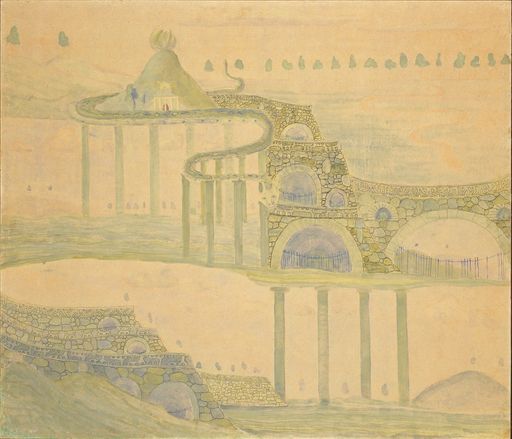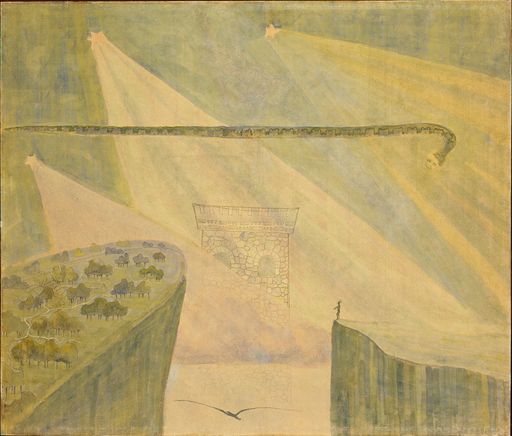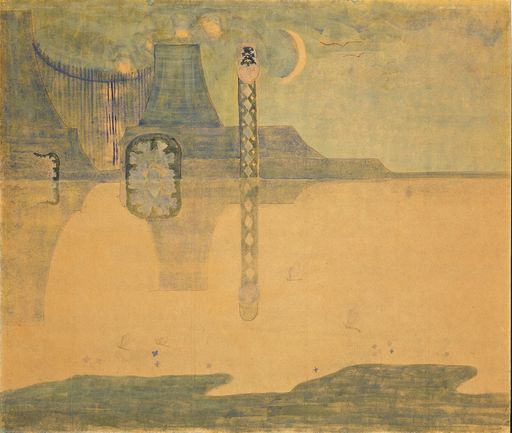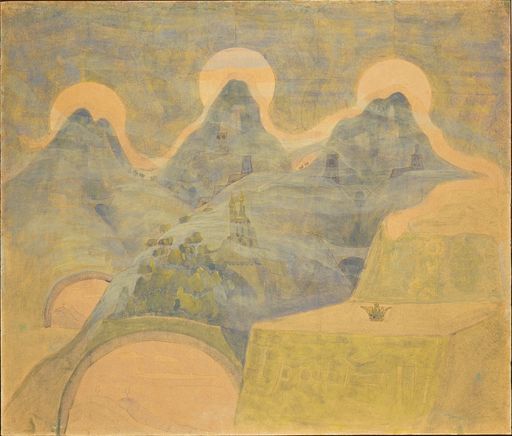Sonata No. 3 (Sonata of the Serpent)

Sonata No. 3 (Sonata of the Serpent)
“Sonata” began to be painted in Druskininkai and was completed in the town of Palanga. Exceptionally uniform in its colour, the “Sonata of the Serpent” is one of Čiurlionis' most complex and enigmatic creations. In Lithuanian mythology, the serpent is a symbol of wisdom. Čiurlionis' serpent is undoubtedly linked to human spiritual life. The series could be interpreted from a psychological perspective as well: a bright thought, crowning man's desires and intuitions, the poetry of dreams and the longing for knowledge... All of these parts develop the same thematic material and motifs in creating the emphatically uniform composition of the “Sonata of the Serpent”.
The serpent in “Allegro” is the inhabitant of the ruins of an ancient world. In “Andante”, the serpent stretches over two irreconcilable cliffs above a bottomless canyon, the left cliff-top filled with verdant flora and life, and the right one barren and dull. In “Scherzo”, the serpent emerges through some mysterious gates and reaches a boundless space. The “Finale” sees it merge with the world as its shining halo.



